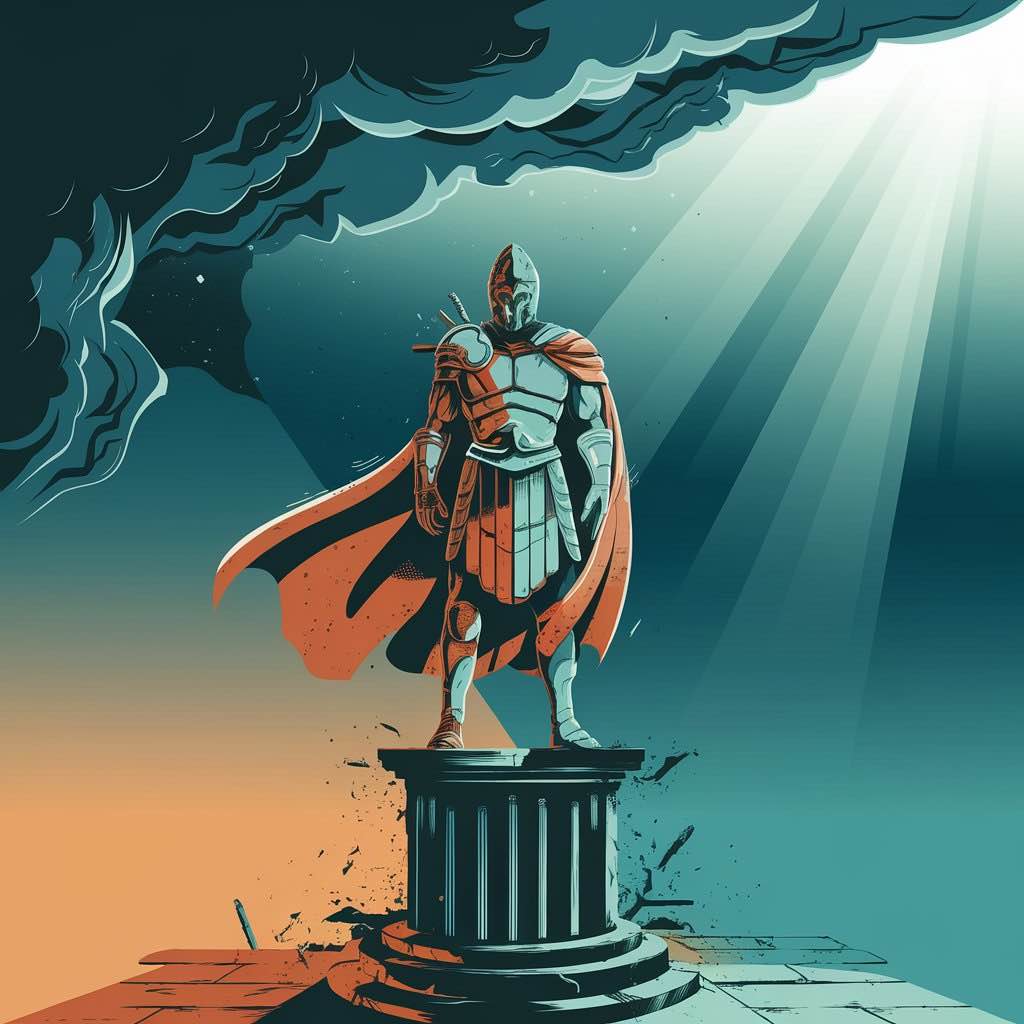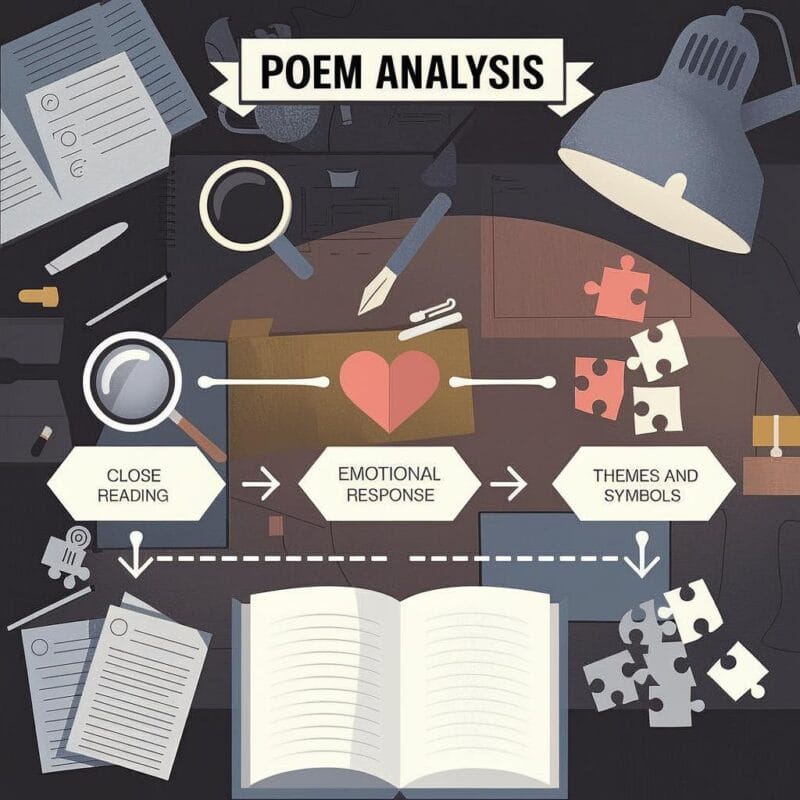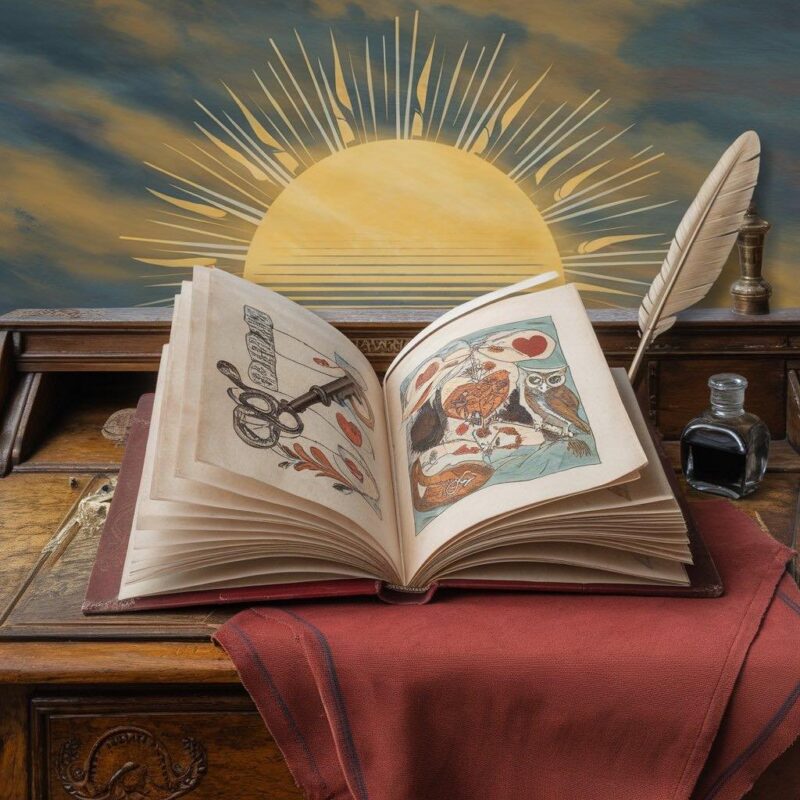- The concept of the tragic hero, rooted in Aristotle’s Poetics, has captivated audiences for centuries. Tragic heroes are often noble characters doomed to downfall due to personal flaws, such as hubris, jealousy, or ambition. This archetype explores the interplay between choice and destiny, reflecting human frailty and fate.
- Tragic heroes possess:
– Noble birth or power
– A tragic flaw (hamartia)
– Admirable qualities that lead to their downfall - Classic examples include Oedipus and Antigone from Greek tragedies, while modern examples feature characters like Anakin Skywalker and Michael Corleone. These characters highlight universal themes of fate, ambition, and the human condition.
- Narrative structures and plot devices for tragic heroes include:
– Hamartia
– Peripeteia (reversal of fortune)
– Anagnorisis (moment of realization) - Tragic heroes evoke pity and fear, offering moral lessons about human flaws and societal expectations. Female tragic figures like Antigone and Juliet reveal unique gender challenges, contrasting with male tragic heroes who often struggle with internal flaws.
The concept of the tragic hero has been a cornerstone in literature, captivating audiences for centuries with its intricate portrayal of human flaws and virtues. Rooted in Aristotle’s Poetics (Latin: De Poetica, circa 335 BCE), the tragic hero is often portrayed as a character of noble stature who is doomed to downfall, suffering, or defeat due to a personal flaw or mistake. This balance of heroic traits and inherent flaws creates a nuanced character that is both admirable and pitiable.
In literature, tragic heroes come alive through their actions and consequences, serving as a reflection of human frailty and the inevitable nature of fate. While they possess admirable qualities such as courage or loyalty, it is their fatal flaw—be it hubris, jealousy, or ambition—that leads to their undoing. Through these characters, authors explore the complex interplay between choice and destiny, often leading to moments of introspection about human nature.
From the doomed Oedipus in Greek tragedies to the ambitious Macbeth in Shakespearean plays, tragic heroes continue to resonate with readers due to their timeless appeal. Their stories serve as a powerful reminder of the delicate balance between virtue and vice, inspiring reflection on the universal themes of fate, integrity, and the human condition.
Defining the Tragic Hero

The concept of a tragic hero has been integral to literature, representing a character who experiences a downfall due to a combination of fate and personal flaws. Stemming from ancient Greek theater, this archetype carries enduring characteristics that continue to captivate readers and audiences.
Characteristics of a Tragic Hero
A tragic hero is often of noble birth or holds a position of power, which sets the stage for their significant fall. This character typically possesses a tragic flaw, known as hamartia, that contributes to their downfall. Common examples include hubris or excessive pride, which blinds them to reality or leads them to make misguided decisions. Sympathy for the tragic hero emerges as audiences witness the character’s struggle against unavoidable fate.
Additionally, while the tragic hero may begin with admirable qualities, their journey highlights the interplay between destiny and personal failure. This archetype serves as a cautionary tale, offering insights into the consequences of human flaws and the inevitable nature of fate. Their story often culminates in a grave consequence, enhancing the dramatic tension of the narrative.
Differences Between Tragic Heroes and Anti-Heroes
Tragic heroes and anti-heroes differ fundamentally in their characteristics and roles within literature. A tragic hero, as described, is marked by noble traits yet is ultimately brought down by their tragic flaw. Their narrative evokes empathy because the audience often recognizes their intrinsic virtues and the harshness of their fate.
In contrast, an anti-hero lacks conventional heroic qualities such as morality or courage. They defy traditional heroism, often acting out of self-interest rather than altruistic motives. Anti-heroes may challenge the notion of heroism entirely, blurring moral lines and defying audience expectations. While anti-heroes can also be protagonists, the scope of their journey differs significantly from that of a tragic hero’s classic rise and fall.
Evolution of the Tragic Hero in Literature
Tragic heroes have been a crucial element of storytelling, evolving significantly since their inception. From Greek drama to Shakespearean plays and modern literature, the concept has transformed, reflecting changes in cultural values and narrative techniques.
Origins in Greek Drama
Greek drama laid the foundation for the tragic hero, with playwrights like Sophocles and Euripides at the forefront. Such characters were defined by a singular tragic flaw or hamartia that led to their downfall, often eliciting catharsis in the audience.
Figures like Oedipus embody this archetype, doomed by fate and personal hubris. The tension between fate and free will was a hallmark, making these stories both impactful and timeless.
Aristotle’s Contributions
Aristotle formalized the concept in his work Poetics. He defined the tragic hero as someone who is not entirely good or evil, whose misfortune results from a personal mistake or flaw—hamartia—combined with an ill-fated destiny. He emphasized that the hero should be relatable yet noble to elicit feelings of pity and fear. This framing left a lasting impact on literature, setting standards for character development across centuries.
Shakespeare’s Contribution
Shakespeare expanded the tragic hero’s complexity, integrating external conflicts and internal dilemmas. Characters like Macbeth and Othello grapple with ambition and jealousy, leading to their downfalls. Macbeth’s unchecked ambition spirals into tyranny and madness, while Othello’s jealousy is manipulated into tragedy. Hamlet’s indecision and Romeo’s impulsiveness further illustrate these heroes’ multifaceted natures, demonstrating Shakespeare’s deep exploration of human flaws.
Modern Interpretations
In contemporary literature, the tragic hero persists, but with a focus on internalized struggles and sociocultural implications. Characters such as Jay Gatsby in The Great Gatsby (1925) highlight the pursuit of the unattainable, resulting in personal ruin.
Modern narratives often reflect societal pressures and personal disillusionment. In films and TV dramas, in addition to literature, figures like Don Draper from Mad Men embody the dark complexities of the human psyche, underscoring the timeless nature of the tragic hero throughout changing narratives.
Tragic Heroes in Literary Works
Tragic heroes in literature captivate readers with their fatal flaws, noble intentions, and inevitable downfall. These complex characters embody the tension between greatness and vulnerability, highlighting universal themes of fate, ambition, and the human condition. Their stories evoke empathy while exploring the depths of tragedy and moral conflict.
Classic Examples
In ancient literature, the concept of the tragic hero is exemplified through figures like Oedipus from Sophocles’ Oedipus Rex. Born into a noble lineage, Oedipus fulfills a devastating prophecy by killing his father and marrying his mother. His inability to escape fate, intertwined with a tragic flaw of hubris, leads to his downfall.
Another significant example is Antigone in Sophocles’ play of the same name. Antigone’s steadfast loyalty to her family and defiance of royal authority result in her tragic end. Her moral integrity, while admirable, ultimately brings about her destruction due to the rigid consequences she faces for her actions.
Contemporary Examples
In modern storytelling, tragic heroes continue to resonate through characters like Anakin Skywalker from the Star Wars saga. Anakin’s journey reveals how his fear and pride contribute to his transformation into Darth Vader, marking a shift from heroic potential to tragic villainy.
In literature, Michael Corleone from The Godfather series embodies the tragic hero archetype. Initially reluctant to join his family’s criminal empire, his ambition and protective instincts lead him to make irreparable decisions, culminating in a loss of personal integrity and familial connections. These characters illustrate how elements of classic tragic hero narratives persist in contemporary literature.
Narrative Structure and Plot Devices
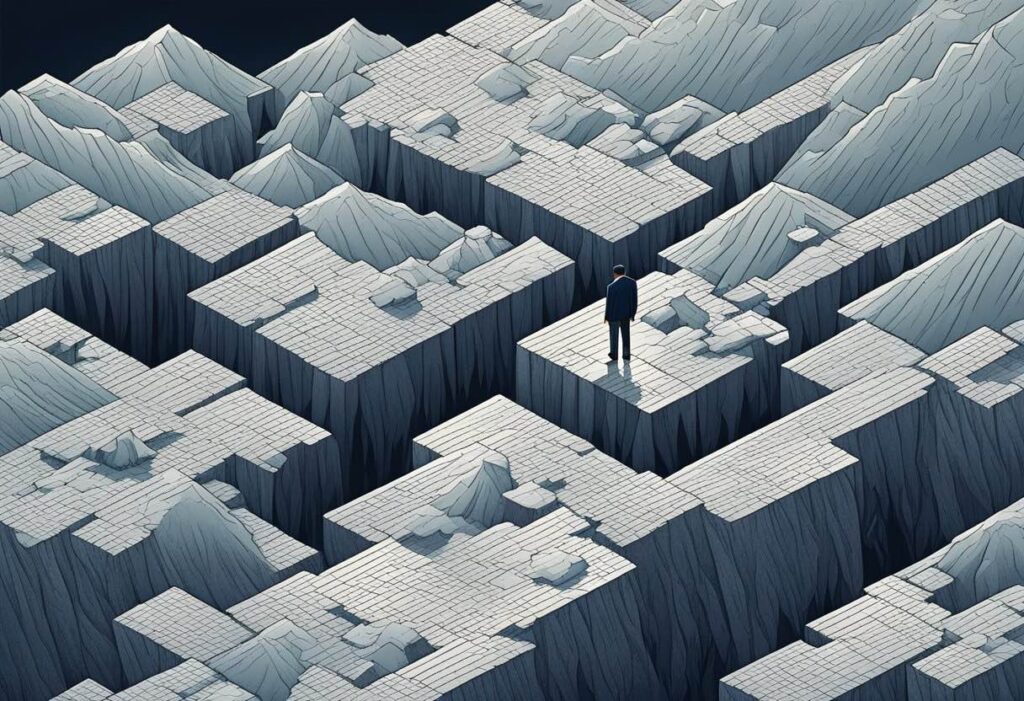
The tragic hero archetype plays a critical role in literature through specific narrative structures and plot devices. These elements often include a central flaw leading to a reversal of fortune and a transformative moment of realization for the protagonist.
Role of Hamartia
Hamartia, often referred to as the tragic flaw, is a pivotal element in crafting a tragic hero’s narrative. This flaw, commonly linked to excessive pride or hubris, sets the stage for the character’s downfall. It is through this inherent fault that the protagonist’s circumstances begin to unravel. The tragic hero typically starts from a position of esteem, and it is their hamartia that propels them into a series of unfortunate events.
In literature, authors emphasize the hero’s traits that initially elicit admiration and sympathy. These traits become a double-edged sword as they lead to critical misjudgments and mistakes. Hamartia not only molds the protagonist’s journey but also provides insight into human nature’s complexities, exploring how personal flaws can catalyze one’s collapse.
Peripeteia and Anagnorisis
Peripeteia is a central plot device representing the reversal of the protagonist’s fortune. This turning point is critical for building tension in the narrative, where the hero shifts from good fortune to bad. Such moments starkly contrast their prior state, revealing the consequences of earlier choices.
Equally significant is anagnorisis, in which the character experiences a profound realization or discovery. This moment is frequently linked to self-awareness about their hamartia or its consequences. Often occurring toward the climax, anagnorisis creates a pivotal point where the tragic hero comprehends the irreversible nature of their fate.
Together, these elements create an intricate narrative structure, illustrating the evolution and ultimate transformation of the tragic hero. Through their interconnected roles, peripeteia and anagnorisis deepen the plot, compelling the hero toward their inevitable end.
Psychological and Emotional Aspects
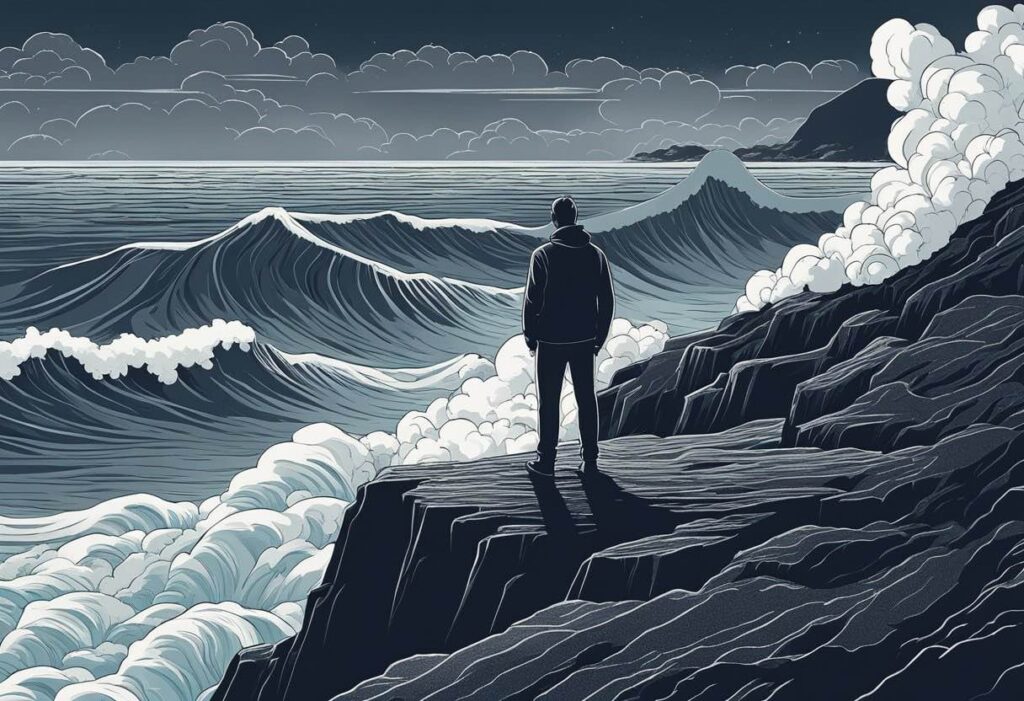
The tragic hero’s journey engages audiences by eliciting complex emotional responses and a deep psychological connection. Through specific elements, such as catharsis and the arousal of pity and fear, the interplay of emotions and intellect becomes a key component in understanding the tragic hero’s impact.
Catharsis and Audience Reaction
Catharsis plays a pivotal role in tragedies by providing a release of emotions through the audience’s connection with the tragic hero. This process unfolds as viewers witness the hero’s struggles, flaws, and eventual downfall. Drawn into the narrative, they experience tension and relief, leading to a sense of psychological cleansing or renewal. Engagement with the tragic hero’s journey is far from passive; instead, it sparks a dynamic interaction where emotions of awe, empathy, and detachment intertwine.
This emotional journey not only offers a sense of emotional release but also helps build a deeper understanding of the intricate human emotions present within the tragedy. This shared cathartic experience can leave a lasting impact, emphasizing the connection between the hero’s fate and the audience’s emotional investment in the character.
Initiating Pity and Fear
The tragic hero’s fallibility plays a significant role in evoking pity and fear, essential emotions in tragedies. The hero’s noble characteristics are highlighted alongside their flaws, creating a sense of identification and empathy. This juxtaposition mirrors the audience’s own potential vulnerabilities, triggering fear through the recognition of personal moral limitations. The narrative structure artfully balances these elements, ensuring that the hero’s perilous journey resonates deeply.
By examining their plight, audiences are reminded of the transient nature of life and the universal struggle with destiny and choice. The tragic hero becomes a mirror that inspires introspection and emotional engagement, as pity and fear intertwine to enhance the dramatic experience.
Critical Perspectives on Tragic Heroes
In this section, we explore the tragic hero’s moral ambiguity, flawed nature, and the societal or personal forces that lead to their downfall. Scholars debate whether their demise is self-inflicted or fated, examining themes of hubris, fate, and ethics. These analyses deepen our understanding of human fragility and the tragic consequences of ambition and choices.
Tragic Flaws and Moral Lessons
Tragic heroes typically possess noble traits alongside fatal flaws such as pride, jealousy, or ambition. These flaws usually trigger a series of misfortunes, leading to the character’s downfall. This downfall often provides moral lessons about the dangers of unchecked ambition or excessive pride.
For example, Shakespeare’s characters commonly exhibit traits that audiences recognize as both admirable and dangerous. These stories reveal how authority and personal virtues can be overshadowed by a character’s darker traits and inspire individuals to reflect on the balance of virtues and vices in their own lives.
The Tragic Hero as a Reflection of Society
Tragic heroes often serve as mirrors of the societies they belong to, highlighting prevalent values, ethics, and conflicts. These characters reveal how personal struggles and societal expectations intersect, portraying the broader sociocultural context.
In A View from the Bridge (1955), Eddie Carbone’s tragic trajectory showcases his community’s devotion to honor and loyalty. The tension between personal desires and communal expectations illustrates broader societal conflicts. Thus, the tragic hero becomes a vehicle through which authors explore and critique the norms and moral dynamics of their time, which leads readers to reflect on the alignment between individual actions and collective values.
Tragic Heroines and Gender in Tragedy
Tragedy also highlights the struggles of female protagonists, whose stories reveal unique challenges influenced by gender. These stories shed light on the contrast between female and male tragic figures in classical and modern literature.
Female Representation in Tragic Roles
Tragic heroines such as Antigone from Sophocles’ play represent defiance against authority and personal sacrifice. Her journey is marked by clashes with patriarchal structures, showcasing her determination despite societal constraints.
In Shakespeare’s Romeo and Juliet, Juliet embodies youthful passion and tragedy through her ultimate sacrifice for love. These characters often face insurmountable obstacles, highlighting themes of love, duty, and resistance.
Female tragic roles play a significant part in challenging conventional expectations, often revealing the complexities of societal dynamics and individual agency within dramatic narratives.
Comparative Analysis with Male Tragic Heroes
Examining tragic heroines in relation to male tragic heroes reveals distinct narrative structures and character arcs. While male figures like Oedipus and John Proctor from Arthur Miller’s The Crucible often struggle with internal flaws or fate, female figures battle societal barriers alongside personal challenges.
Male heroes frequently epitomize themes of hubris and moral downfall. In contrast, female heroines navigate issues tied to gender roles and autonomy. The interplay between personal conviction and external pressure distinguishes their stories. These narratives underscore the varied portrayals of tragedy, emphasizing how gender influences character development and the aspects of their tragic fates.
Further Reading
A Tragic Hero: Morally Virtuous or Deliberately Vicious? by No Sweat Shakespeare
Drama in a Tragic Key by The Metropolitan Opera
Who are the most famous tragic heroes in literature? on Quora
Why Tragedy? on Reddit
